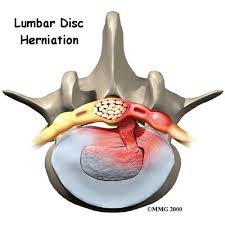Healthy Life: Diagnosis & Treatment – Posteriolateral Protrusion of Lumbar Discs (831)
Healthy Life: Diagnosis & Treatment – Posteriolateral Protrusion of Lumbar Discs
蘇鎮邦 (Christopher So):舒整物理治療師 (Manipulative Physiotherapist) 人類工程師 (Ergonomist)
Patients’ trust in the physiotherapist is extremely important to patients’ diagnosis and treatment.
This patient is a 23 years old arborist who works for his father. His father has been a patient of mine for over 20 years who has come to me fairly often in the past. Now, the father has stepped down from frontline work. He has not been coming much because of no incidence of pain. His son had a big job 3 months ago. He came to me for back treatment. As usual, he was 80% better and I discharged him with emphasis on continuing back exercises till he is a 100%. Yesterday, he moved house and hurt his back and he came to me today because he found it hard to get out of bed this morning. Also, he had pain walking and he was limping. He had pain and numbness down his right leg and he felt weakness in lifting his toes up. He had restricted movement in his back or lumbar spine especially bending forward or flexion. It is fortunate that he has been coming to me for 7-8 years. He and his father have complete confidence in me. I advised him to rest at least for 4 weeks.
I carefully diagnosed his problem because the subject examination indicated a serious problem as it involved the sciatic nerve. His right straight leg raising test (SLR ) is only 10 degrees whereas his left leg is 70 degrees. Also, it causes severe pain in the back. Fortunately, his knee and ankle reflexes were normal. Very gentle mobilisation, ultrasound and interferential therapy were applied. Next day, he told me there was no unwanted reaction from the treatment. I continued the gentle mobilisation and ultrasound but I changed and progressed quickly to intermittent lumbar traction aiming to reduce pressure on the sciatic nerve. I started with only 15 kgwt and progressed by 0.25 kgwt each time till it reached 25 kgwt the maximum. The progress was slower than I expected after 4 days. I referred him to a doctor for MRI. However, the doctor only referred him for a CT scan. The report confirmed that he had posterolateral protrusion on L4/5 (between lumbar spine level 4th and 5th). The doctor referred him to an orthopaedic specialist who did an MRI for him and reconfirmed the CT findings which coincided with the clinical findings.
After the 7th treatment, I started to see him alternate days that means 3 times a week instead of 5 times because there was a more definite and significant improvement in his forward bending movement. I added a stronger mobilising technique (coupling or combined movements) aiming to open the intervertebral foramin to the maximum in order to reduce pressure on the nerve. After twelve treatments, subjectively he said he had improved by 80%. However, objectively I would say it was only 50% because functionally he still had slight pain during walking. He slept without pain especially when he tossed and turned. His SLR had improved to 40 degrees and his toe strength had improved by 50%.

Herniated Disc
I estimated that with 3 more treatments for 1 more week, he should reach 70%. Then, he could return to light duty work. He is very fortunate that he works for his dad who would not doubt him as bludger. In reality, there is no such thing as light duty in the tree removal profession. However, I was sure his dad would not push him and a quick return to work was crucial to his rehabilitation psychologically and physically because he was putting on weight. He started with 2 mornings and slowly increasing the workload to 2 full days and more.
Unfortunately, he used up his health fund and his occupational therapist mum signed him up in her community health centre for continuing rehabilitation with hydrotherapy. On discharge, his forward bending was 70% better, his SLR was 50 degree,and his toes extensors was 60% better.
